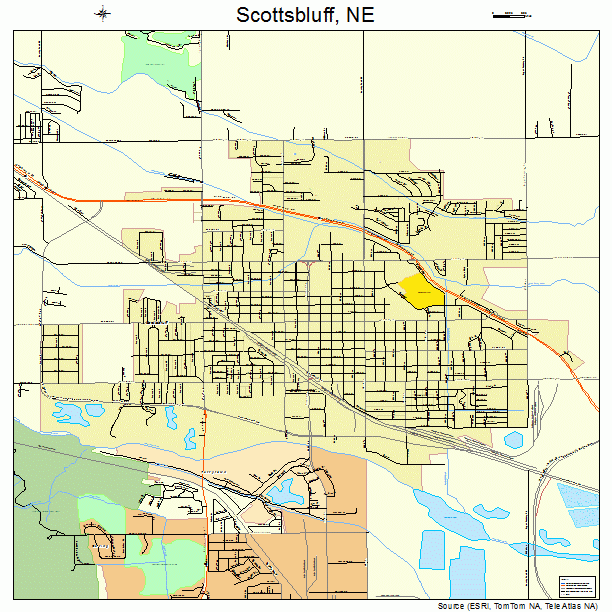Katie Bradshaw has come about this in a interesting way. I want to put her email up here because it hits a number of important points. So here it is. Great write up Katie.
After the article in the Star-Herald about the downtown bike racks, there was some discussion about cycling in the downtown area, as some folks (including some city staff) thought that it was illegal to ride on Broadway. It's not - it's illegal to ride on the *sidewalks* in the downtown area (Broadway, 1st, Ave A - between the railroad tracks and 20th, I believe). I had a long email conversation with Annie Folck with the City of Scottsbluff over the idea of certain routes (like Broadway) being considered "dangerous" for cyclists (her words), and I suggested that use of the word "dangerous" was best avoided - that perhaps a route was more "difficult" than others - and that rather than highlighting what routes are "difficult" that we should highlight easier bike routes. I linked to the bike map of the last city I lived in, Champaign-Urbana, Illinois, as an example of a map that points out the best bike routes through town, while indicating difficult or higher-traffic routes. http://www.champaigncountybikes.org/map/
Annie was super proactive, and asked if I would meet with her to discuss the issue. She invited Paul Snarr from the City of Gering, as well as Jon Reiter and Sergio Rodriguez, who are the mapping gurus for the respective cities. Paul and Annie are both very supportive of the idea of creating an online bike map route, which can easily be integrated into the "Beehive" mapping system, which Scottsbluff has linked on its website https://scottsbluffne.map.beehere.net/ , and which Gering will be getting soon.
I think this is a great opportunity, for several reasons:
1. It opens a good line of communication between cyclists and city staff, many of whom do not ride and do not understand the needs of cyclists. We can let them know where there are bad potholes / gravel patches / etc.
2. If bike routes are highlighted on an official city map, when other infrastructure projects are underway along a route, there may be potential to add-on some cyclist-friendly upgrades.
3. If local folks and visitors can look at a map and figure out the best way to get from point A to point B on a bike, we may see an increasing number of cyclists - a critical mass that could help us all become more visible to motorists.
***********************************
Here is the first information the city is requesting from us:
1. What commuter routes do you normally take through the cities? Where else would you want to go on a bike? What are the best routes, and the difficult areas along those routes? [I'm hoping to gather routes and sticky notes on those Chamber of Commerce maps.]
2. What are the characteristics of your preferred routes?
3. What are the characteristics of routes you tend to avoid?
***********************************
This is just a first step, but I'm excited about it. I had also contacted the folks who put together the Champaign-Urbana map, and they said they would send us some information on their process. They also gave the following advice:
Creating a bike map is a LOT of work.
It is TOTALLY worth it.
Hopefully you have, or will have a active and energetic group to help you. (Like a bicycle advocacy group like CCB, that “knows the local roads” so the map is helpful.).
Maps take loads of data, so we had lots of layers of data shared with us from various county and municipal staff.
We contacted with a university cartography department to create the huge map file, that we could then get printed.
There is no “Right way” to create a bike map. When we made our recent major revision, we looked at some 30 odd bike maps from big cities to gather great ideas. So there are some key style and content decisions you will need to make along the way. The first is answering “Who is this map for?” We designed our map with new riders in mind.
This takes money too, so you will need to raise funds. We can share our budget list too.
You might look at the LAB list of Bicycle Friendly Communities that have won a bronze, silver, or gold awards that are close to the same size, and contact their bike folks asking for their maps to review.
If anyone has commentary on a direction to take this, or on how WNBC might best be involved, I'd love to hear it!
Cheers,
-Katie Bradshaw

No comments:
Post a Comment